March 25 to March 31
A 56-year-old Wu Li Yu-ke (吳李玉哥) was straightening out her artist son’s piles of drawings when she inadvertently flipped one over, revealing the blank backside of the paper. Absent-mindedly, she picked up a pencil and recalled how she used to sketch embroidery designs for her clothing business.
Without clients and budget or labor constraints to worry about, Wu Li drew freely whatever image came to her mind. With much more free time now that her son had found a job, she found herself missing her home village in China, where she left behind four daughters. She jotted down these sentiments onto the paper.

Photo courtesy of Grandma Wu Li Yu-ke
When her son Wu Chao-hsien (吳兆賢) came home from work that evening, his mother had filled up nearly 30 sheets. Wu Li told her son how much she had been dreaming of home recently, and Wu realized how lonely she was. So he immediately went out and bought her a stack of drawing paper.
Two years later on March 11, 1960, Wu organized a solo exhibition for his mother, which received significant media attention was endorsed by politicians and the literati. She was dubbed the “Chinese Moses,” referring to Anna Mary Robertson Moses, an American who didn’t start painting until she was 78, as well as the “grandma painter” — although Wu Li would not actually become a grandmother until 1966.
The popularity of untrained, “amateur” painters reached its peak with the Hung Tung (洪通) craze in the mid-1970s, and Wu Li was often cited as one of the earliest figures in this trend. Wu remained supportive as his mother’s art career superseded his own, challenging her creativity by giving her new materials and mediums, including a 1m by 90m scroll that took her nearly two years to complete.
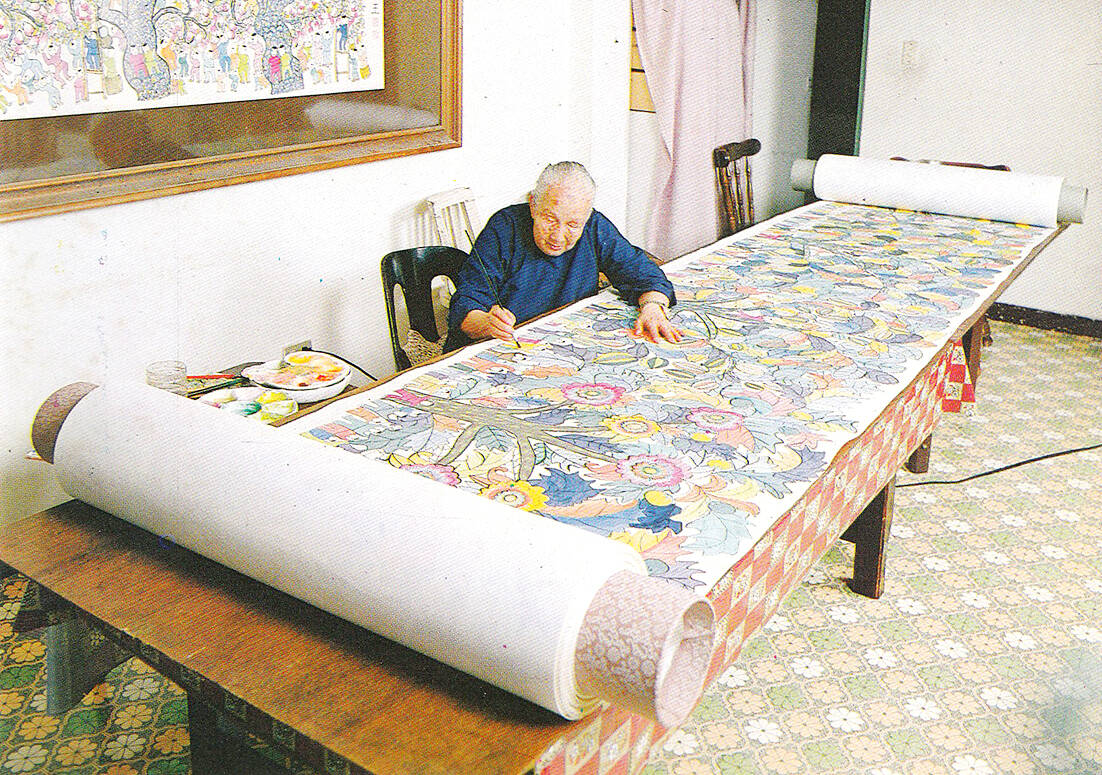
Photo courtesy of Grandma Wu Li Yu-ke
Wu Li was prolific and energetic until her death on March 30, 1991, branching out into sculpture, watercolor, oils, ink brush and painting on whatever surface her son gave her, including plates, gourds and logs.
STRANDED IN TAIPEI
Wu Li was born in 1901 in a rural village in Fujian Province’s Putian City (莆田). Like most girls at that time, she did not receive a formal education, but her grandfather often brought her to church where she learned to read, writes Liao Chin-yuan (廖瑾瑗) in her 2009 biography. She began embroidering at the age of eight.
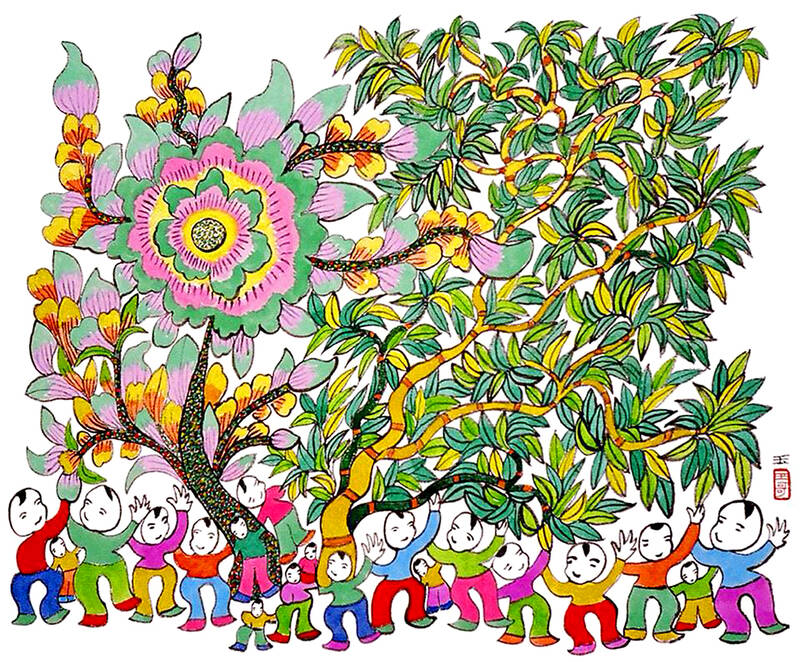
Photo courtesy of Grandma Wu Li Yu-ke
Wu Li married a local man at the age of 16 and they had 10 children. Five of the six boys died young, and fortune tellers predicted a difficult fate for the surviving Wu Chao-hsien. Their living conditions deteriorated with the outbreak of the Sino-Japanese war in 1937, especially after Wu Li’s husband died in 1943. Wu raised the family alone by farming and embroidering, but things failed to improve with the end of World War II as supplies were lacking and inflation rampant.
She learned about the relative stability in Taiwan through a distant relative who did business there, and in July 1949, she bade her daughters farewell and left her hometown for the first time with her son.
“When the war is over and the political situation settles down, hopefully we’d have made money in Taiwan by then,” Wu Li thought to herself. “We’ll be back soon, it’s no big deal, just a few months.” It turned out to be 39 years.
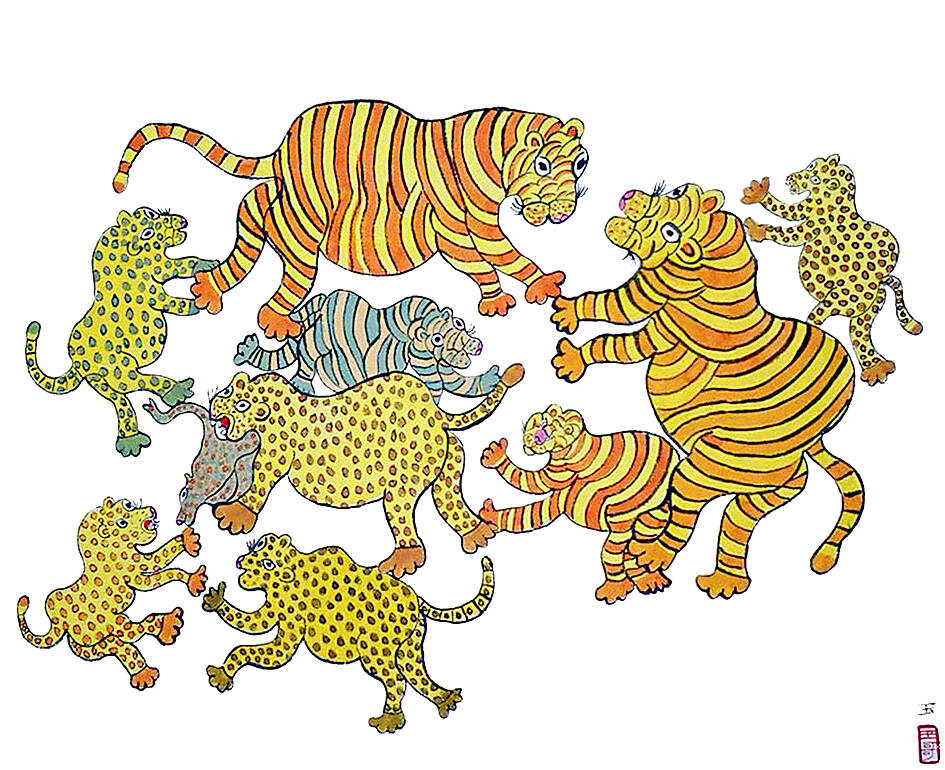
Photo courtesy of www.grandmawuliyuge.com
Wu Li heard that Hsing Hua rice noodles (興化米粉) from Putian were popular in Taiwan, so she cooked the food at home and carried it on a shoulder pole to sell in front of Taipei Main Station. Business boomed, but after a relative cheated her out of her savings, she decided to return to China — only to find that it was no longer possible.
Wu Li took up selling qipaos at Taipei’s Nanmen Market, quickly earning a loyal customer base for her efficiency, sewing skills and eye for design.
DRAWING HOMESICKNESS
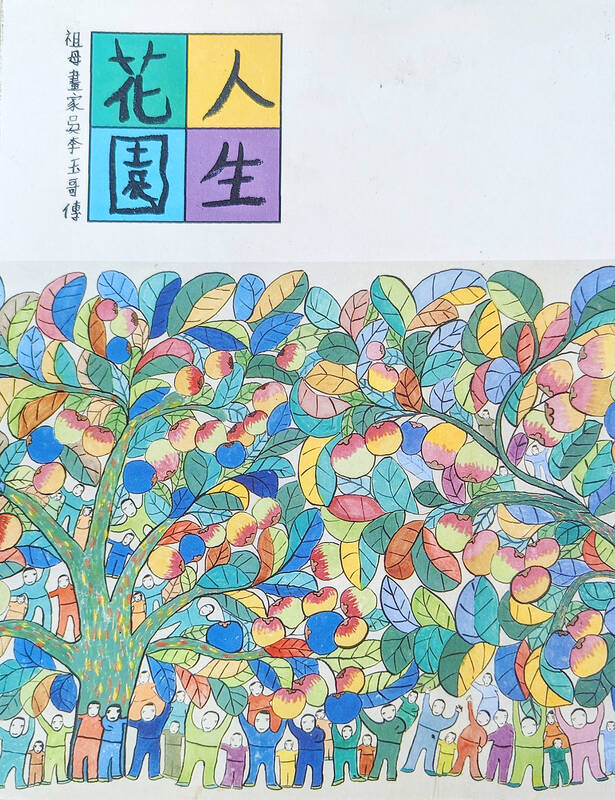
Photo courtesy of Taipei Municipal Library
Contrary to the fortune teller’s predictions, Wu Chao-hsien grew up just fine. Wu Li supported his interest in art and saved up money for lessons, which was rare for families of modest means. Neighbors constantly chided her, asking why she didn’t send her son to a cram school instead.
Wu Li took on fewer clients after her son began working at Gongguan Police Station as deputy leader of the civilian defense brigade, eventually discovering her own passion for art.
“Every day I’m thinking of how to express the images in my heart that, in the past, I wanted to but didn’t know how to express,” she writes in the introduction to her first collection in 1973.
“Everything I draw is because my heart needs it,” she adds. “I also hope to bring joy to others, and turn the world into a colorful painting that everyone can live in.”
Wu was astounded at how fast his mother improved. He showed some of Wu Li’s art to his teachers, who urged him to keep encouraging her. Around that time, Wu Li got swindled by another relative, and the two moved into a dilapidated, self-built house in today’s Sindian District (新店) where they would paint together every night in the cramped space.
By 1960, to reduce some of the clutter, Wu put on a solo show for his mother, selecting about 60 pieces to show at Taiwan Shin Sheng Daily News (台灣新生報) building. Wu was young but well-connected; he had the support of his art teachers and friends at the Free China Poet Association, many of them government bigwigs. He wrote and sent out press releases and stayed up all night making frames for the pieces.
During a poetry gathering, longtime Chinese Nationalist Party (KMT) member Lu Wu-wei (呂無畏) asked Wu why he looked so tired — and when Wu told him why, he volunteered to pen the introduction to the exhibition.
“Her work draws from our national classical traditions, but it also fits modernist, fauvism and cubism styles,” Lu writes. “Her bold strokes are full of life.”
Lu then directed Wu to bring the paper to the houses of some of the elder members and have them sign it — including former premier Yu Hung-chun (俞鴻鈞) and then-Control Yuan president and famed calligrapher Yu You-jen (于右任). This piece hung at the entrance of the exhibition, causing many to wonder who this artist was and why they had never heard of her.
PROLIFIC OUTPUT
The three-day show was well attended and most of the media and audience response was favorable, praising the unrestrained, almost child-like works. Later that year, Wu was going through his work for the prestigious Taiyang Art Exhibition (台陽美術展) when he happened to glance upon his mother’s sketch of Bitan (碧潭) in New Taipei City (新北市) . He submitted it as well, and his mother ended up making the cut instead.
The attention only grew from there, as Wu Li was invited to numerous exhibits and featured in various publications over the next two decades.
She began creating her largest-scale piece in 1974. Wu was getting too busy to help his mother prepare her materials every day, so he bought her a large roll. Wu Li didn’t say anything; she just went to work. The resulting piece, which is said to feature 3,495 children and more than 150 trees, had no theme; she just drew whatever came to mind. This unnamed piece was exhibited in both Japan and Germany, where it was dubbed Garten Des Lebens, “Garden of Life.”
Wu Li started drawing airplanes around 1972 as her desire to go home intensified. In July 1988, she finally saw her daughters again in Xiamen. They wouldn’t take her to her home village, however, as little she remembered remained after the Cultural Revolution.
Wu Li died three years later. Her final artwork of lotus flowers remains uncolored, as she didn’t have a chance to finish it. For more of Wu Li’s work, visit: www.grandmawuliyuge.com.
Taiwan in Time, a column about Taiwan’s history that is published every Sunday, spotlights important or interesting events around the nation that either have anniversaries this week or are tied to current events.

Feb. 17 to Feb. 23 “Japanese city is bombed,” screamed the banner in bold capital letters spanning the front page of the US daily New Castle News on Feb. 24, 1938. This was big news across the globe, as Japan had not been bombarded since Western forces attacked Shimonoseki in 1864. “Numerous Japanese citizens were killed and injured today when eight Chinese planes bombed Taihoku, capital of Formosa, and other nearby cities in the first Chinese air raid anywhere in the Japanese empire,” the subhead clarified. The target was the Matsuyama Airfield (today’s Songshan Airport in Taipei), which
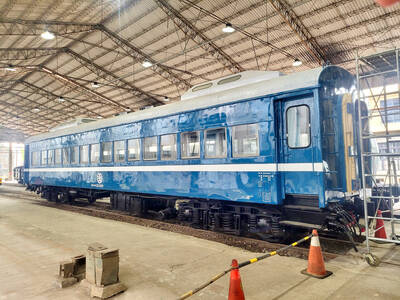
For decades, Taiwan Railway trains were built and serviced at the Taipei Railway Workshop, originally built on a flat piece of land far from the city center. As the city grew up around it, however, space became limited, flooding became more commonplace and the noise and air pollution from the workshop started to affect more and more people. Between 2011 and 2013, the workshop was moved to Taoyuan and the Taipei location was retired. Work on preserving this cultural asset began immediately and we now have a unique opportunity to see the birth of a museum. The Preparatory Office of National

China has begun recruiting for a planetary defense force after risk assessments determined that an asteroid could conceivably hit Earth in 2032. Job ads posted online by China’s State Administration of Science, Technology and Industry for National Defence (SASTIND) this week, sought young loyal graduates focused on aerospace engineering, international cooperation and asteroid detection. The recruitment drive comes amid increasing focus on an asteroid with a low — but growing — likelihood of hitting earth in seven years. The 2024 YR4 asteroid is at the top of the European and US space agencies’ risk lists, and last week analysts increased their probability

On Jan. 17, Beijing announced that it would allow residents of Shanghai and Fujian Province to visit Taiwan. The two sides are still working out the details. President William Lai (賴清德) has been promoting cross-strait tourism, perhaps to soften the People’s Republic of China’s (PRC) attitudes, perhaps as a sop to international and local opinion leaders. Likely the latter, since many observers understand that the twin drivers of cross-strait tourism — the belief that Chinese tourists will bring money into Taiwan, and the belief that tourism will create better relations — are both false. CHINESE TOURISM PIPE DREAM Back in July